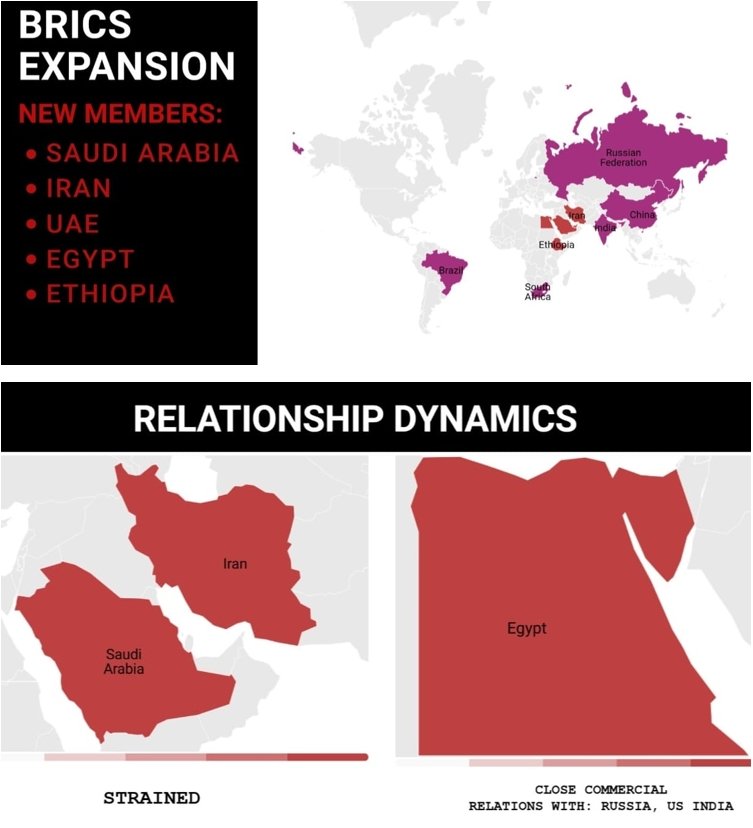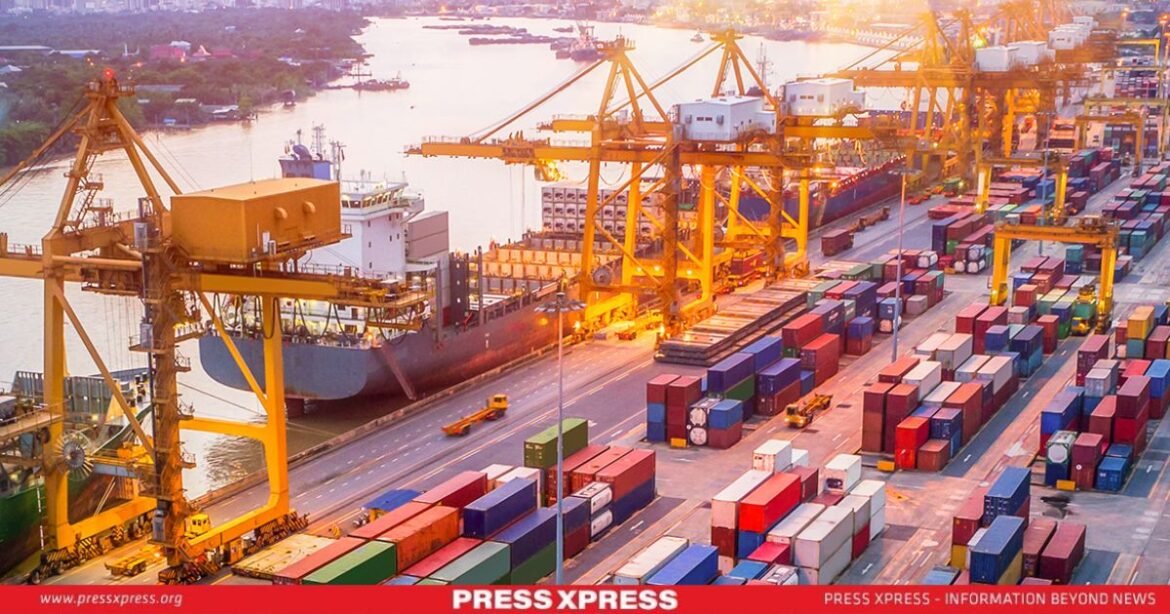Key highlights:
- Economist Impact forecasts a 0.9% decline in worldwide GDP
- The combined population of India and China, totaling around 2.5 billion people, could exert substantial influence on global policymaking if their alignment strengthens
- Freight rates are surging, witnessing a 173% increase in Asia to North Europe rates, doubling in Asia-Mediterranean prices, and carriers imposing surcharges ranging from $500 to $2,700 per container
- Despite facing various challenges, a substantial 82% of industry professionals recognize the pivotal role of technology in enhancing resilience in 2024
As 2024 unfolds, the global trade sector confronts unparalleled geopolitical hurdles set to transform its landscape. Addressing the uncertainties arising from geopolitical shifts, professionals in the industry are placing strategic emphasis on key areas this year.
You can also read: GDP Growth in Most Countries Neither Sustainable nor Inclusive – WEF
Thorough risk assessment, careful scenario planning, diversification of routes and suppliers, and unwavering commitment to regulatory compliance are crucial considerations. Focusing on these areas will empower to minimize the repercussions of geopolitical risks on the operations and maintain a seamless business continuity.
Geopolitical unrest gives rise to a critical concern, namely, the unavoidable increase in operating costs for shippers and forwarders. In a scenario where there are significantly increased trade barriers on high-tech goods—a focal point in the current geopolitical climate—Economist Impact forecasts a 0.9% decline in worldwide GDP.
In an environment where operating expenses are already escalating, challenges like the Red Sea situation, expansion of the BRICS bloc, global freight facing surcharges, and businesses grappling with higher trade costs only intensify the anxieties of industry professionals. Successful management and proactive preparation are essential for dealing with these prices and ensuring financial stability.
“Recognizing the acute challenges in the Red Sea, the shipping industry is gearing up to fortify its capabilities in risk assessment, scenario planning, route diversification, and regulatory compliance in 2024 in order to navigate geopolitical uncertainties.”
-Christian Roeloffs, cofounder and CEO of Container xChange
BRICS Bloc Set to Challenge Western Hegemony
The expansion of the BRICS bloc to include new economies like Saudi, Iran, UAE, Egypt, and Ethiopia raises the possibility of heightened global trade polarization, impacting geopolitical alignments.
Despite their strained relationship, Iran and Saudi Arabia find themselves within the same organization. Egypt, while maintaining close commercial ties with Russia and India, also has significant connections with the United States. The combined population of India and China, totaling around 2.5 billion people, could exert substantial influence on global policymaking if their alignment strengthens.
Notably, Russia and Iran, jointly influencing “trade” policymaking within the BRICS group, could contribute to a reevaluation of trade dynamics, potentially sharpening the contrast between U.S. allies and the BRICS nations.
If the bloc increasingly aligns political decisions and geopolitical stances, it may introduce additional complexities to the global trade order, leading to a growing polarization in global trade. This could potentially result in restrictions on trade between blocs, making geopolitical compliance more intricate and challenging.

Global Freight Faces Bottlenecks as Surcharges Hit $2,700 per ContainerTop of Form
Disruptions in global freight are on the rise as container carriers redirect away from the Suez Canal, leading to prolonged lead times and potential port congestion. Freight rates are surging, witnessing a 173% increase in Asia to North Europe rates, doubling in Asia-Mediterranean prices, and carriers imposing surcharges ranging from $500 to $2,700 per container.
Ocean rates are experiencing a sharp spike in ex-Asia lanes due to ongoing Houthi attacks and Red Sea diversions, causing increased costs and capacity constraints. Carriers are responding with higher rates and surcharges, aiming to surpass the $6,000 per forty-foot equivalent unit (FEU) threshold. Backhaul rates have doubled since mid-December, highlighting the complexity of the current market environment.
Rates for shipments from Asia to North America’s West Coast are rapidly increasing, with carriers expected to reach the $5,000 per FEU mark by mid-month. Similar trends are observed in transatlantic routes, with carriers announcing significant General Rate Increases (GRIs) of up to $5,000 per FEU in February. The industry foresees capacity shortages and congestion in the coming weeks, with relief anticipated only as demand softens towards late January.
In transpacific air cargo, rates remain steady, but there is a notable increase in China to Northern Europe rates, reaching $3.67 per kilogram this week, up from $3 in December. This uptick may indicate a shift from ocean to air cargo due to extended ocean transit times.

One-Fifth of Businesses Grapple with Higher Trade CostsTop of Form
Despite facing various challenges, a substantial 82% of industry professionals recognize the pivotal role of technology in enhancing resilience in 2024, with predictive analysis and forecasting tools taking the forefront.
Amidst escalating concerns regarding protectionism, global fragmentation, and political instability, businesses are reevaluating risks in their supply chains and shifting towards friendshoring and dual supply chain strategies. This shift is underscored by the widespread adoption of AI, as 98% of executives are already leveraging AI to transform at least one aspect of their supply chain operations.
Over a third of companies are utilizing friendshoring to influence trade and supply chain operations, while 32% are establishing parallel supply chains or dual-sourcing strategies. Furthermore, more than a quarter are opting for fewer suppliers, marking a 16-percentage point increase from the previous year, as businesses weigh the benefits of consolidation against diversification and control against resilience.
Concerns about higher tariffs in key markets they engage with are troubling for a fifth of businesses, with 22% of executives highlighting the challenge of political instability in their sourcing markets. Additionally, nearly a quarter (23%) express apprehension about heightened geopolitical uncertainty.
Navigating Industry Resilience in 2024
Technology Resilience:
- Despite challenges, 82% of industry professionals acknowledge technology’s crucial role in bolstering resilience.
Supply Chain Strategies:
- 98% of executives leverage AI to transform supply chain operations.
Friendshoring and Dual Supply Chains:
- Over a 3rd of companies adopt friendshoring strategies.
- 32% establish parallel supply chains or dual sourcing.
Supplier Optimization:
- 26% opt for fewer suppliers, a 16% increase from the previous year.
Challenges in Key Markets:
- 20% of businesses troubled by higher tariffs in key markets.
- 22% of executives face challenges due to political instability in sourcing markets.
Geopolitical Uncertainty:
- Nearly a quarter (23%) express apprehension about heightened geopolitical uncertainty.
To sum up, the global trade sector’s success in overcoming the challenges of 2024 hinges on adopting a multifaceted approach. Thriving in this intricate environment demands businesses to prioritize strategic planning, integrate cutting-edge technologies, and exhibit adaptability to the dynamic geopolitical terrain.


